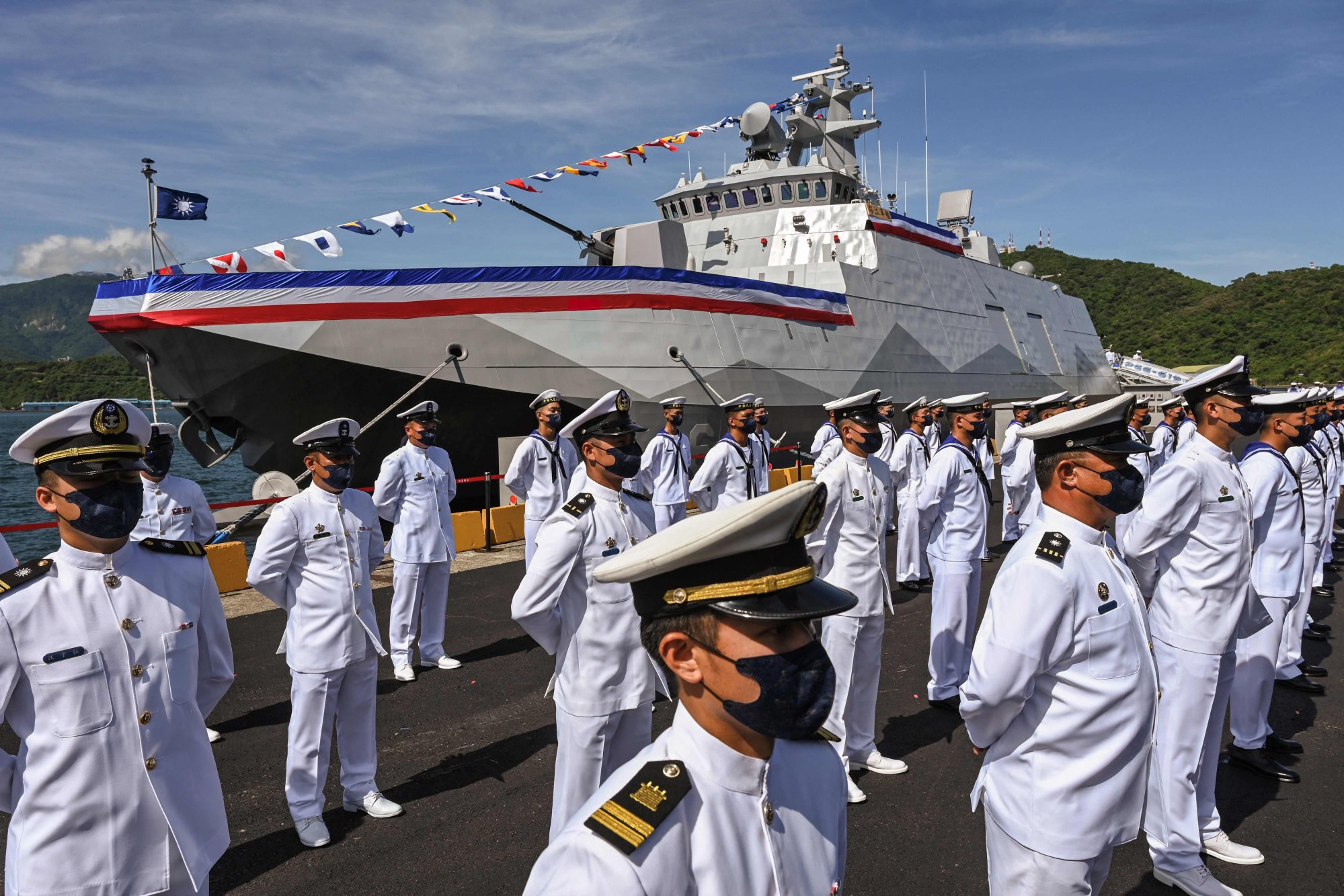
Taiwan to boost corvette firepower amid ‘ever-growing threats’ from PLA
- Five new ‘carrier killers’ – to be delivered by 2026 – will be equipped with more supersonic missiles
- Ministry says move aims to strengthen the navy’s defences should a cross-strait conflict break out
The five new corvettes, dubbed “carrier killers”, are to be built for the Taiwanese navy from 2023 – the second batch of the vessels, to be delivered by 2026.
They will be equipped with more Hsiung Feng (or Brave Wind) III supersonic missiles than the first batch of corvettes – weapons that will be able to hit their targets faster and from further way, according to the island’s military.

The navy will double the number of those missiles from four to eight for the second lot of corvettes, the defence ministry said in a report submitted to the legislature over the weekend for review. Meanwhile, they will have four of the older missiles, known as Hsiung Feng II, instead of eight.
“In the face of ever-growing threats from large Chinese communist warships and the far-striking ability of their ship-launched missiles, the military has decided to adjust the combat power of the corvettes,” according to the report.
It said the move was aimed at helping to boost the navy’s defences should a cross-strait conflict break out.
US-China ties face new test as Washington plans to boost arms sales to Taipei
The Hsiung Feng III missiles reportedly have a top speed of Mach 2.5 (more than 3,000km/h) and an operating range of 160km. That compares to the earlier missile’s top speed of Mach 0.85 (over 1,000km/h) and range of 140km.
Lung Teh Shipbuilding Co is currently building the first batch of six corvettes, with the first of those – named Ta Chiang – commissioned by the navy in September last year. The shipbuilder is due to deliver another five corvettes by the end of 2023.
Those corvettes will be armed with eight Hsiung Feng II missiles, four Hsiung Feng IIIs and 16 Hai Chien (Sea Sword) II anti-aircraft missiles. The weapons were all developed by the government-funded National Chung-Shan Institute of Science and Technology.
The corvettes will also be equipped with 76mm cannons, Phalanx close-in weapon systems and T74 machine guns.
Is time up for TikTok on Taiwan? Island mulls ban over ‘cognitive warfare’
Their construction and weapon systems will cost a total of NT$38.7 billion (US$1.26 billion) and they will be able to destroy targets on land or sea, including aircraft carriers, according to the ministry.
It said the navy would open the tender process next year for construction of hulls for the second batch of five corvettes at a total cost of NT$9.07 billion.
The ministry said the overall cost would increase since they will be fitted with the more expensive Hsiung Feng III missiles – going up to NT$7.56 billion each, from NT$6.43 billion per vessel in the first batch – with a total cost of NT$37.8 billion.
Beijing regards the island as part of China and has never ruled out the use of force to take control of it. Most countries, including the US, do not recognise Taiwan as an independent state. Washington, however, opposes any attempt to take the island by force.

